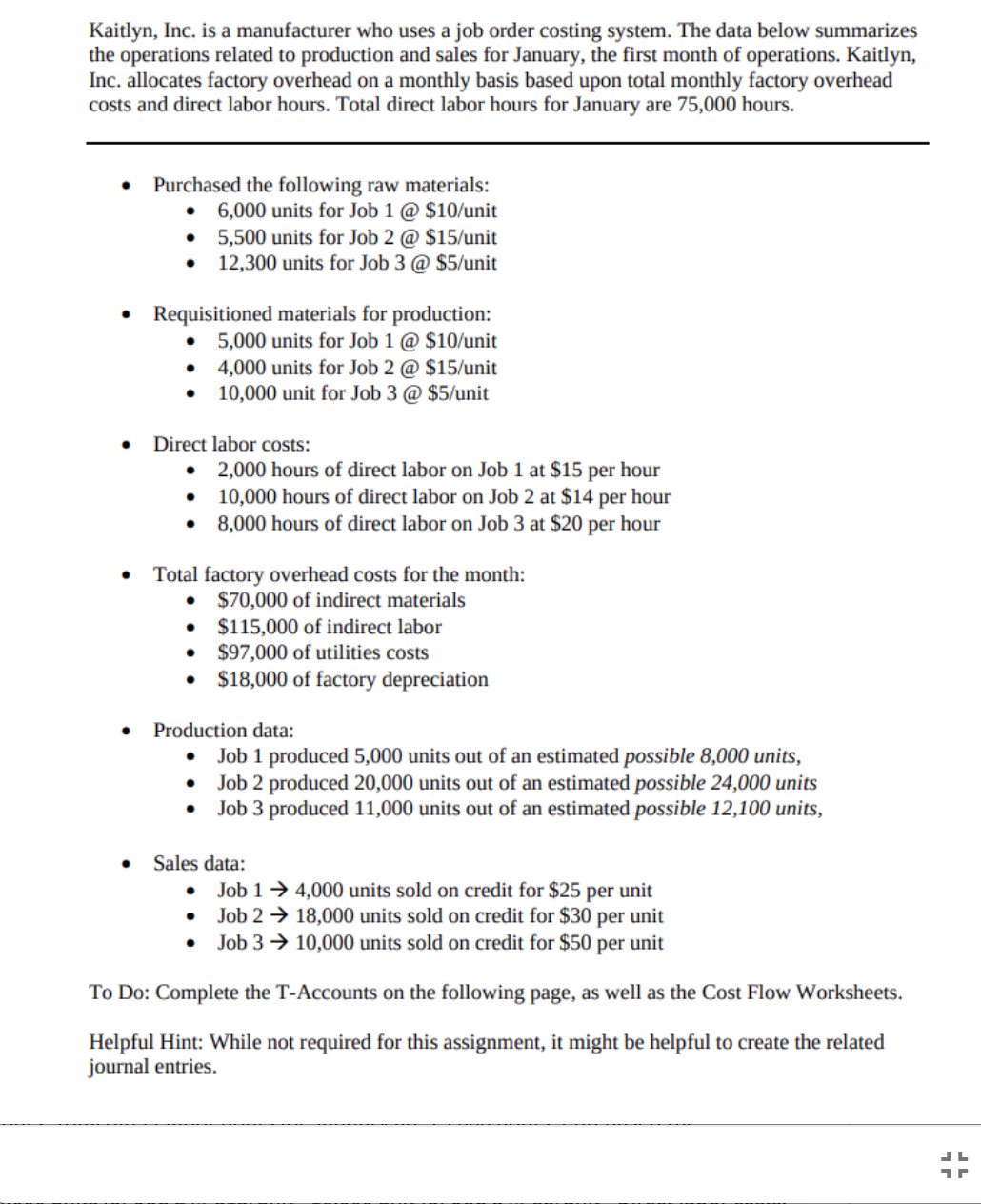Question 16 What is the ending value of Raw Materials (also referred to as Raw Materials Inventory) relating to Jobs 1, 2 and 3 ? Question 16 options: $59,000 $51,000 $44,000 $45,000 $53,000 Question 17 What is the ending value of WIP (also referred to as Work in Process Inventory) relating to Jobs 1, 2 and 3? Question 17 options: $95,000 $44,000 $53,000 $45,000 $51,000 Question 18 What is the ending value of Finished Goods (also referred to as Finished Goods Inventory) relating to Jobs 1, 2 and 3? Question 18 options: $45,000 $44,000 $51,000 $53,000 $59,000
Question 16 What is the ending value of Raw Materials (also referred to as Raw Materials Inventory) relating to Jobs 1, 2 and 3 ? Question 16 options: $59,000 $51,000 $44,000 $45,000 $53,000 Question 17 What is the ending value of WIP (also referred to as Work in Process Inventory) relating to Jobs 1, 2 and 3? Question 17 options: $95,000 $44,000 $53,000 $45,000 $51,000 Question 18 What is the ending value of Finished Goods (also referred to as Finished Goods Inventory) relating to Jobs 1, 2 and 3? Question 18 options: $45,000 $44,000 $51,000 $53,000 $59,000
Principles of Cost Accounting
17th Edition
ISBN:9781305087408
Author:Edward J. Vanderbeck, Maria R. Mitchell
Publisher:Edward J. Vanderbeck, Maria R. Mitchell
Chapter6: Process Cost Accounting—additional Procedures; Accounting For Joint Products And By-products
Section: Chapter Questions
Problem 6E: Foamy Inc. manufactures shaving cream and uses the weighted average cost method. In November,...
Related questions
Question
Question 16
What is the ending value of Raw Materials (also referred to as Raw Materials Inventory) relating to Jobs 1, 2 and 3 ?
Question 16 options:
|
$59,000 |
|
|
$51,000 |
|
|
$44,000 |
|
|
$45,000 |
|
|
$53,000 |
Question 17
What is the ending value of WIP (also referred to as Work in Process Inventory) relating to Jobs 1, 2 and 3?
Question 17 options:
|
$95,000 |
|
|
$44,000 |
|
|
$53,000 |
|
|
$45,000 |
|
|
$51,000 |
Question 18
What is the ending value of Finished Goods (also referred to as Finished Goods Inventory) relating to Jobs 1, 2 and 3?
Question 18 options:
|
$45,000 |
|
|
$44,000 |
|
|
$51,000 |
|
|
$53,000 |
|
|
$59,000 |

Transcribed Image Text:Kaitlyn, Inc. is a manufacturer who uses a job order costing system. The data below summarizes
the operations related to production and sales for January, the first month of operations. Kaitlyn,
Inc. allocates factory overhead on a monthly basis based upon total monthly factory overhead
costs and direct labor hours. Total direct labor hours for January are 75,000 hours.
Purchased the following raw materials:
6,000 units for Job 1 @ $10/unit
5,500 units for Job 2 @ $15/unit
12,300 units for Job 3 @ $5/unit
Requisitioned materials for production:
5,000 units for Job 1 @ $10/unit
4,000 units for Job 2 @ $15/unit
• 10,000 unit for Job 3 @ $5/unit
Direct labor costs:
2,000 hours of direct labor on Job 1 at $15 per hour
10,000 hours of direct labor on Job 2 at $14 per hour
8,000 hours of direct labor on Job 3 at $20 per hour
Total factory overhead costs for the month:
$70,000 of indirect materials
• $115,000 of indirect labor
$97,000 of utilities costs
• $18,000 of factory depreciation
Production data:
Job 1 produced 5,000 units out of an estimated possible 8,000 units,
Job 2 produced 20,000 units out of an estimated possible 24,000 units
Job 3 produced 11,000 units out of an estimated possible 12,100 units,
Sales data:
Job 1→ 4,000 units sold on credit for $25 per unit
• Job 2 → 18,000 units sold on credit for $30 per unit
• Job 3 → 10,000 units sold on credit for $50 per unit
To Do: Complete the T-Accounts on the following page, as well as the Cost Flow Worksheets.
Helpful Hint: While not required for this assignment, it might be helpful to create the related
journal entries.
Expert Solution
This question has been solved!
Explore an expertly crafted, step-by-step solution for a thorough understanding of key concepts.
This is a popular solution!
Trending now
This is a popular solution!
Step by step
Solved in 6 steps with 6 images

Knowledge Booster
Learn more about
Need a deep-dive on the concept behind this application? Look no further. Learn more about this topic, accounting and related others by exploring similar questions and additional content below.Recommended textbooks for you

Principles of Cost Accounting
Accounting
ISBN:
9781305087408
Author:
Edward J. Vanderbeck, Maria R. Mitchell
Publisher:
Cengage Learning

Managerial Accounting
Accounting
ISBN:
9781337912020
Author:
Carl Warren, Ph.d. Cma William B. Tayler
Publisher:
South-Western College Pub

Cornerstones of Cost Management (Cornerstones Ser…
Accounting
ISBN:
9781305970663
Author:
Don R. Hansen, Maryanne M. Mowen
Publisher:
Cengage Learning

Principles of Cost Accounting
Accounting
ISBN:
9781305087408
Author:
Edward J. Vanderbeck, Maria R. Mitchell
Publisher:
Cengage Learning

Managerial Accounting
Accounting
ISBN:
9781337912020
Author:
Carl Warren, Ph.d. Cma William B. Tayler
Publisher:
South-Western College Pub

Cornerstones of Cost Management (Cornerstones Ser…
Accounting
ISBN:
9781305970663
Author:
Don R. Hansen, Maryanne M. Mowen
Publisher:
Cengage Learning

Principles of Accounting Volume 2
Accounting
ISBN:
9781947172609
Author:
OpenStax
Publisher:
OpenStax College

Financial And Managerial Accounting
Accounting
ISBN:
9781337902663
Author:
WARREN, Carl S.
Publisher:
Cengage Learning,